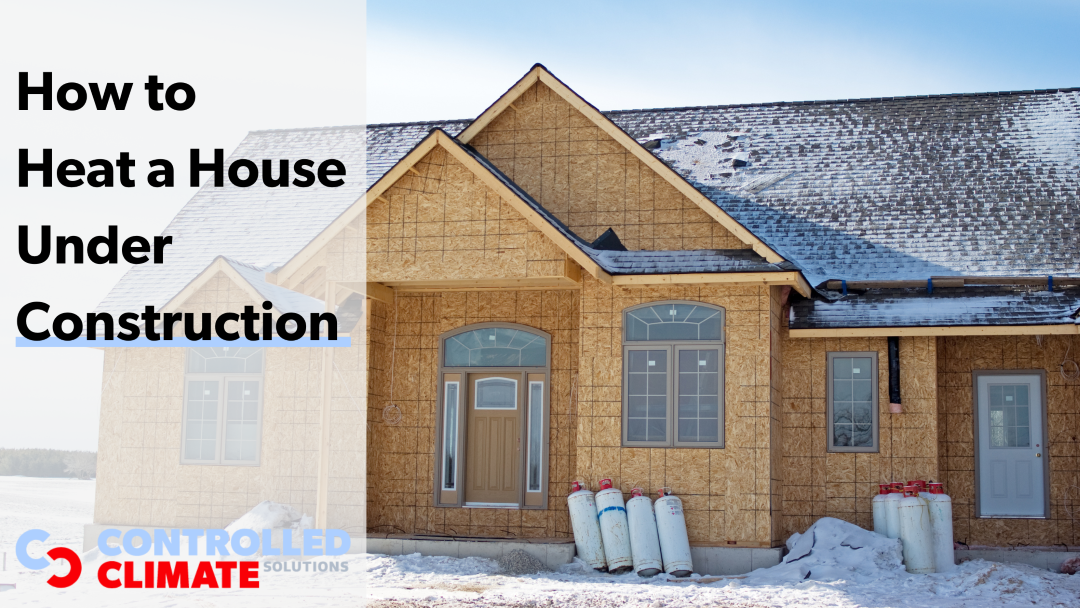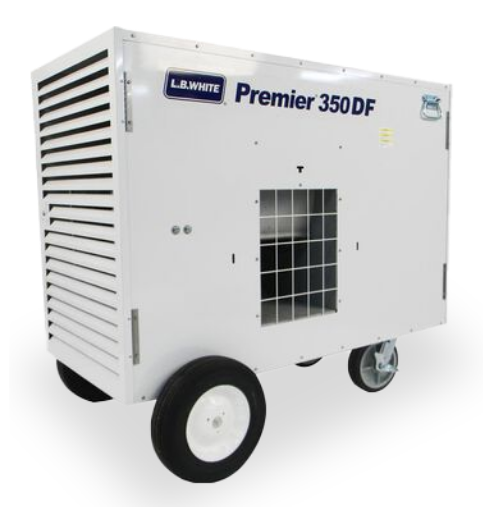How to Heat a House Under Construction

Building a new home is always a challenging and exciting project. But it can also be quite taxing on the people working on it when the weather outside suddenly turns from crisp and cool to unbearably cold.
As a construction manager, this is the time of year for you to start thinking about how to keep your crews warm during the long winter months ahead. Fortunately—with a little bit of preparation and the right temporary heating partner—this can be accomplished quickly, effectively, and affordably.
In this guide, we will discuss how to heat a house under construction and provide some helpful tips for how to keep your builders both comfortable and productive all winter long. Let’s begin.
5 WINTER CONSTRUCTION TIPS FOR TEMPORARY HEATING
Whether this is your first winter managing a construction crew or you’re looking to learn from previous years’ mistakes, here are five essential tips to keep in mind when heating a house under construction.
1. Set Up a Quality Temporary Enclosure
There’s a very good reason this tip makes the top of the list. Without a well-constructed and sealed building enclosure in place, you’ll be losing heat (and money!) faster than you’d care to know. A quality enclosure will help trap the heat inside while keeping the harsh elements out. This enclosure should be large enough to allow for plenty of movement and activity, but it should also be well-insulated to keep the heat in.
When shopping around for enclosures, be sure they’re made of durable materials—like polyethylene or PVC—that can be easily secured around the perimeter of the building. At Controlled Climate Solutions, we rent and install temporary building enclosures that are highly durable, weather-resistant, and made to meet the unique needs of any job site.
2. Choose the Right Portable Heater for the Job
There are many different types of temporary heating solutions on the market, so it’s important to choose the one that is best suited for your project needs. When selecting a portable heater, you should consider the following four factors.

How to choose a portable heater:
- The BTU output: How much heat will you need to maintain a comfortable temperature inside the job site enclosure? For a small to medium size room, we recommend a minimum of 30,000 BTUs. For a larger space, you’ll likely need much more than that.
- The fuel source: What type of fuel is available on-site? If you have access to a natural gas line, that will be the most efficient option. However, if you’re working in a remote location or your job site doesn’t have access to gas, LPG, NG, or diesel are always good options.
- The power source: What power is available at the job site (if any)? If the electrical hasn’t yet been wired, you may need to use generators to power your heaters.
- The size and weight: How easy is the heater to transport and set up? You’ll want something that’s lightweight and easy to move around as needed. If the heater is going to be located inside the house, be sure there aren’t any tight corners that could prevent it from getting where it needs to go.
If you’re unsure of the correct type, size, or quantity of portable heaters for your job site, give us a call and one of our experts will be more than happy to help you determine exactly what you need.
3. Ensure There’s Proper Ventilation
When using any type of heater, it’s important to ensure there is proper ventilation in place. This will help prevent the build-up of carbon monoxide and other dangerous gases that can be emitted from the heater.
Most industrial heaters are designed to fit multiple styles of flexible or rigid ducting, so you can easily vent the exhaust fumes outside of your enclosure. If you’re using a smaller, residential-grade heater, you may need to get creative with your ducting setup. Just be sure the fumes are directed outside and away from any windows or doors that could allow them back in.
4. Utilize Air Handlers to Circulate the Heat
If you have access to an electrical power source, we recommend using air handlers to circulate the heat inside the enclosure. Air handlers are essentially large fans that help distribute the heat evenly throughout the space, which is especially important if you’re working in a large area.
To get the most out of your air handler, be sure to place it near the heater so it can better circulate the heat throughout the entire job site. If possible, we recommend using multiple air handlers to ensure there aren’t any “cool spots.”
5. Keep a Steady Source of Fuel on Hand
If you’re using a portable heater that runs on fuel, it’s important to have a steady supply of that fuel on hand at all times. The last thing you want is to run out in the middle of a cold winter day.
To avoid this, we recommend keeping at least two weeks’ worth of fuel on hand at all times. This will give you plenty of time to order more if needed, and it will help ensure you never have to go without heat for long. Or, even better, hire a local fuel concierge service so you have one less thing to worry about.
LEAVE THE TEMPORARY JOB SITE HEATING TO US
We know you’re more than capable of setting up a safe and effective temporary heating solution for your winter job site—but why not make it easier on yourself? Leave your temp heating responsibilities to us so you and your team can get back to doing what you do best—creating stunning residences you and the future homeowners will be proud of.
At Controlled Climate Solutions, we go beyond the simple steps of heater rental and delivery to provide expert-led installation, building enclosure, fuel concierge, and more. Contact us today to learn why Twin Cities custom home builders and commercial contractors are choosing to partner with us for their temp heating and cooling needs.
